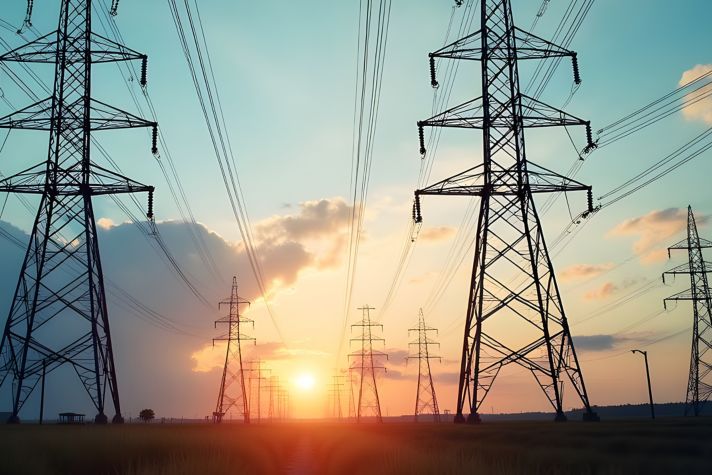What you'll learn from this article:
- How energy storage solutions like BESS, microgrids and Virtual Power Plants can help businesses reduce costs, manage renewable energy more effectively and enhance grid reliability.
- Strategies to improve operational resilience during power outages and disruptions.
- The role of integrated energy management systems in optimizing energy use, reducing peak demand charges and participating in energy markets for additional value.
Energy used to flow in one direction, flowing predictably from power plants into homes and businesses. Today, the energy landscape is dynamic and not one sided.
As energy costs rise and grids age, businesses need smarter strategies to manage energy use, maintain operational continuity and achieve energy efficiency objectives. As a result, many are looking beyond traditional power models and investing in more adaptive solutions. Energy storage solutions have become an effective way to stay ahead.
Battery Energy Storage Systems (BESS), microgrids, Distributed Energy Resources (DERs), Virtual Power Plants and long-duration storage technologies are available now to help address a wide range of commercial and industrial challenges. Here are five of the most powerful ways they can help deliver value for your business.
Helping Reduce Energy Costs with Better Timing
Energy use isn’t always the problem. Timing is. In many regions, peak demand charges can make up a significant portion of a business’s electricity bill. These are often driven by just a few hours of high use each month.
That’s where BESS comes into play. By storing electricity when it’s less expensive and drawing from that reserve during peak times, businesses can avoid unpredictable spikes and keep costs manageable. This approach, sometimes called peak shaving or load shifting, doesn’t require changes to operations, but instead uses smarter timing.
In one example, a renewable energy provider in Ontario implemented Honeywell’s multi-megawatt-hour BESS to handle peak shaving. The system charges when demand is low and discharges during the most expensive hours, reducing grid stress and helping clients avoid high-rate periods.
Making Renewable Power More Reliable
Even with more businesses using solar and wind, power generation of renewables doesn’t always match demand. That’s where microgrids and DERs can help fill the gap.
A microgrid allows a facility or a group of buildings to generate and manage its own power. When connected to a larger grid, it can support broader reliability. If the grid fails, a microgrid can run independently and keep operations online. DERs, which include everything from solar panels to generators, are smaller energy sources that can be used together in a microgrid.
In one case, a European manufacturing site struggling with frequent blackouts installed a solar-powered microgrid supported by battery storage. The result was a system that now covers up to 80% of the site’s energy demand, dramatically improving power reliability and reducing operational costs.
Using Cleaner Energy More Efficiently
Producing renewable energy is only useful if it can be stored and used when needed. Without storage, solar or wind power often goes unused.
Some regions, such as Chile, have already seen the cost of mismatched production. “They produce more solar than their grid load,” said Mohammad Hoda, energy storage business director at Honeywell. “They have to shut it down during the day. Then at night, they run diesel generators.”
Energy storage helps solve this by capturing extra power when it’s available and saving it for later. That could mean using stored solar energy at night or wind power during calm periods.
Flow batteries, for example, are useful in places where temperatures are high or where long duration is needed. By using a mix of short- and long-term storage, businesses can make better use of renewable systems without wasting energy.
Staying Operational During Disruptions
From cyberattacks to climate-induced blackouts, outages are becoming more frequent and last longer. For many businesses, staying operational during these disruptions isn’t optional – it’s required.
Energy storage solutions, specifically BESS and microgrids, can help facilities keep running during grid failures.
Some storage systems can also support blackstart capabilities, which means they can restart systems without outside power. In areas with tough conditions, flow batteries can provide longer backup coverage, especially where heat or high demand make typical batteries less effective.
Managing Energy as One Smart System
As energy systems get more complex, businesses need better tools to manage them. Virtual Power Plants help by linking different energy sources together and operating them as one.
VPPs allow companies to control solar panels, batteries, and loads across multiple systems. They can shift usage during peak time, respond to grid signals, or even participate in energy markets to earn revenue.
This coordination helps give companies more control and more value from their energy investments. It also supports the grid to help avoid stress during times of high demand.
Explore our whitepaper The Role of Energy Storage in Building a Resilient, Cost-Effective Grid of the Future to see how it all connects.





